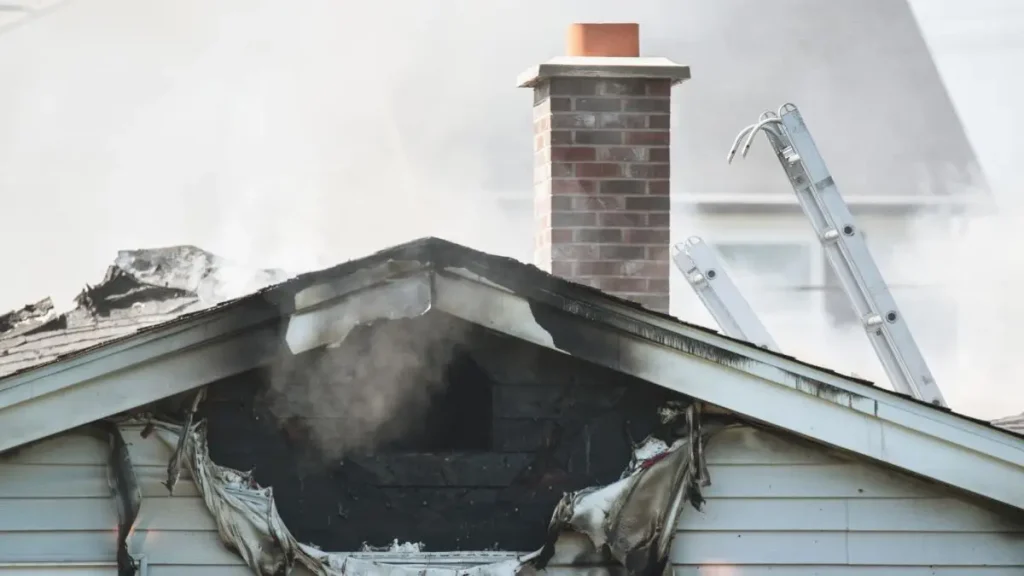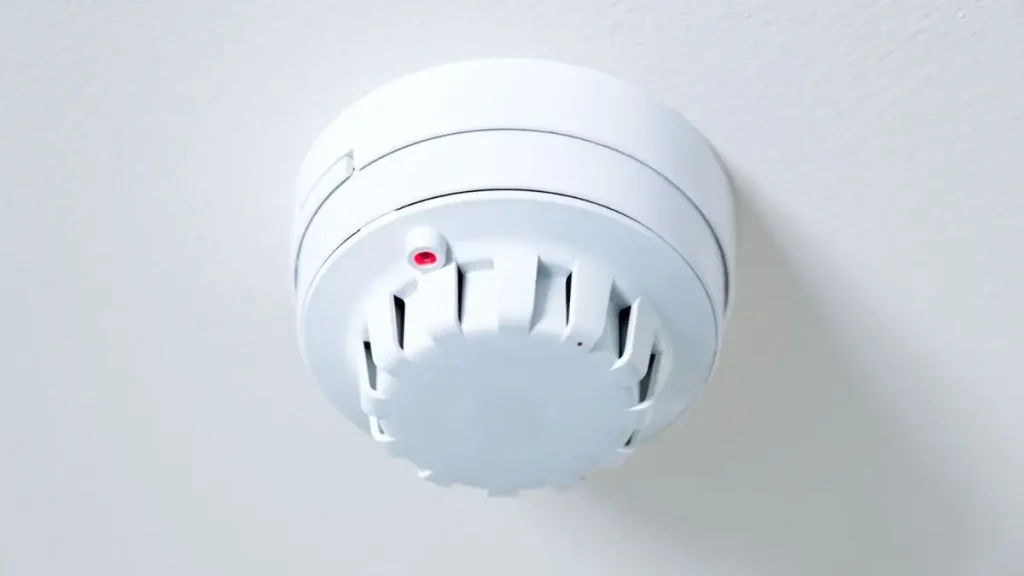Woman, 78, Dead After House Fire on Northwest Side of San Antonio
I woke up to yet another heartbreaking story from our city—this time, a deadly house fire on San Antonio’s Northwest Side. A 78-year-old woman died early Thursday morning when flames tore through her home near Loop 410 and Southill Drive.
The fire started around 3:30 a.m., and by the time firefighters arrived, heavy smoke had already taken over the house. They managed to get inside, pulled the woman out from a rear bedroom—but it was too late. She didn’t make it.
What makes this even harder is that she wasn’t alone. She lived with her pets—three dogs and some birds. Firefighters rescued one of the dogs and the birds. But two dogs are still missing.
This isn’t just another fire report. It’s someone’s mother, grandmother, neighbor. And sadly, it’s not rare. Seniors living alone are some of the most vulnerable in house fires, especially during overnight hours when smoke detectors or mobility issues can mean the difference between life and death.
It’s a gut punch—but it’s also a wake-up call.
What Happened – The Fire That Took Her Life
It all started just before dawn on Tuesday.
According to a report by KENS 5, emergency crews got the call around 3:30 a.m. Flames had already engulfed most of the house near Southill Drive and Loop 410 when they arrived. Firefighters rushed in and found the woman toward the back of the home—unconscious.
Despite their best efforts, she didn’t survive.
There’s no name released yet, but neighbors described her as quiet and kind. Just someone living her life like the rest of us. The Medical Examiner confirmed her death at the scene.
This wasn’t a big, dramatic fire from the outside—but inside, the heat and smoke were deadly. That’s often how these stories go. Silent, fast, and lethal.
Who She Was – Alone, With Her Pets
FOX San Antonio reported that the woman lived by herself with her pets—three dogs and some birds.
When firefighters searched the home, they managed to rescue one of the dogs and all the birds. But two dogs haven’t been found yet. They could’ve run out in panic or worse. We just don’t know yet.
If you’ve ever had pets, you already know what this means. For many elderly folks, those animals aren’t just companions—they’re family. And in a moment like this, that loss runs deeper than we can see from the outside.
It also raises hard questions about how prepared any of us really are. Especially when we live alone. Who checks on us? Who would know if we didn’t make it out?
Fire Cause Still Unknown – But the Clues Are Familiar

Investigators haven’t confirmed how the fire started. But initial reports from SAFD say it may have begun at the back of the house—possibly in a bedroom. No foul play is suspected right now, but official findings are still pending.
Here’s what I can tell you: In many similar cases, it’s not the flames that kill—it’s the smoke. And elderly victims often don’t wake up fast enough to react. In 2024 alone, Texas has already seen multiple fatal fires involving seniors in similar circumstances.
What makes it worse is that a lot of older homes still lack working smoke detectors. Or they’re placed in the wrong spots. Or they haven’t been tested in years. It’s a dangerous combination of age, routine, and forgetfulness—and it only takes one small spark.
Earlier this year, a fatal house fire in Kansas raised the same concerns—unverified alarms and no clear escape plan.
Fires Like This Are More Common Than You Think
This isn’t just a one-off tragedy. Fires like this happen in San Antonio more often than people realize.
The National Fire Protection Association (NFPA) says adults over 65 are twice as likely to be killed or injured in a home fire compared to the general population. And in neighborhoods like this—older homes, fewer neighbors awake in the early hours—those risks go up even more.
We’ve also seen a pattern: Most fatal house fires in Bexar County tend to happen either late at night or early morning. That’s when visibility is low, people are asleep, and response time is everything.
You might think “this won’t happen to me.” But neither did she.
Have you or someone you know ever dealt with a house fire or a close call? Drop your thoughts or stories in the comments—we want to hear how others are staying safe.
What About the Pets? And the People Left Behind
This isn’t just about one person—it’s about the people and animals connected to her. About the neighbors who watched the house burn and the firefighters who risked their lives to go in.
The two missing dogs are still unaccounted for as of now. If you’re in that area—Southill and Evers—keep an eye out. A scared, smoke-covered pet might be hiding under a porch or in a nearby yard. Animal Care Services has been notified, but every extra set of eyes helps.
We also have to talk about the neighbors. Some stood helplessly as the home went up in smoke. One told a reporter they’d “seen her walking her dogs just a few days ago.” That’s the kind of thing that stays with you.
If you’ve ever been through something like this—even close to it—you know how heavy it can sit. That’s why it matters to tell these stories right. Not just as headlines, but as reminders.
Similar tragedies have happened elsewhere too—a deadly fire in Forest Acres, South Carolina also claimed a life under eerily similar circumstances.
What the Experts Say – This Isn’t Just Bad Luck
This kind of tragedy isn’t random—it’s preventable.
Fire safety experts point to one thing again and again: smoke detectors save lives, but only if they work and people can react in time.
In many fatal fires involving seniors, either the smoke alarm failed, or the person was physically unable to respond quickly. That’s why organizations like the San Antonio Fire Department (SAFD) run free smoke detector installation programs—especially for older adults living alone.
Another key issue? Escape plans. Most people don’t have one. Or they’ve never actually walked through it, especially with pets involved. In a house filled with smoke, panic can erase logic in seconds.
You might think, “I’d just get out.” But would you? At 3 a.m., half-asleep, with pets hiding under beds and flames spreading?
In Cleveland, a recent house fire resulted in one death and another injury—yet again highlighting the critical role of working detectors and fast response.
What You Can Actually Do – Real Steps, Right Now

Here’s where it gets practical. If this story hit you even a little, don’t just feel bad—do something.
- Check your smoke alarms today. Test the batteries. Replace any unit older than 10 years.
- Walk through your escape plan. If you live with elderly parents, rehearse it with them. Make sure they know two exits from every room.
- Pet emergency prep: Keep carriers near exits. Leave a window decal letting firefighters know pets are inside.
- Talk to your family. This isn’t just for you—it’s for the people you care about.
Also: SAFD’s program will install smoke alarms for free in San Antonio homes that need them. If your family member lives alone, get them on that list. One form could save a life.
You don’t need to fix everything at once. Just start with one step.
If you’d rather get fire safety tips, alerts, and similar real-world stories straight to your phone—there’s a WhatsApp update feed that covers exactly this kind of stuff. It’s quiet, useful, and worth keeping an eye on.
What Happens Next – Investigation and Community Support
At this point, investigators are still working to figure out exactly what caused the fire. That could take days, sometimes weeks. We’ll update this story as soon as that information becomes public.
In the meantime, two dogs are still missing.
If you live near the 7700 block of Southill, check your yard, garages, and under porches. Scared animals often hide nearby but stay out of sight.
You can also report sightings to Animal Care Services or post on local Facebook groups like “San Antonio Lost Pets.” In some past cases, neighbors have helped reunite animals days after fires. Every small action helps.
And if you knew the woman—or just feel impacted by what happened—there are local grief resources available. Churches, neighborhood groups, and even some fire departments offer community support for those affected by house fires. Don’t carry it all alone.
Why This Story Matters – And How We Respect It
We’ve chosen not to include the victim’s name here until it’s officially released by authorities and confirmed with the family. That’s not just a legal rule—it’s basic human respect.
This isn’t about sensational headlines. It’s about real people and real consequences.
When someone dies like this, the story shouldn’t fade in 24 hours. It should echo—reminding us how fragile life is, and how many of us are one missed alarm or overlooked detail away from disaster.
And if reading this helps even one person check their smoke detector, make a plan, or call a loved one—it’s worth writing.
Final Thoughts
We can’t undo what happened on Southill Drive. But we can take something from it. A reminder to look out for the ones who live quietly, often alone—with pets, with routines, with no backup when something goes wrong.
So don’t just scroll past. Call that relative. Check that detector. Print that pet decal.
Sometimes, real change starts with one uncomfortable story.
If you’re following similar fire safety updates or real-life survival stories, check out our other reports on recent home fires across the U.S. Visit our home incidents section.
Disclaimer: This article is based on information available at the time of publishing. Investigation details may change as new updates are released. We will revise this piece as confirmed facts become public.


